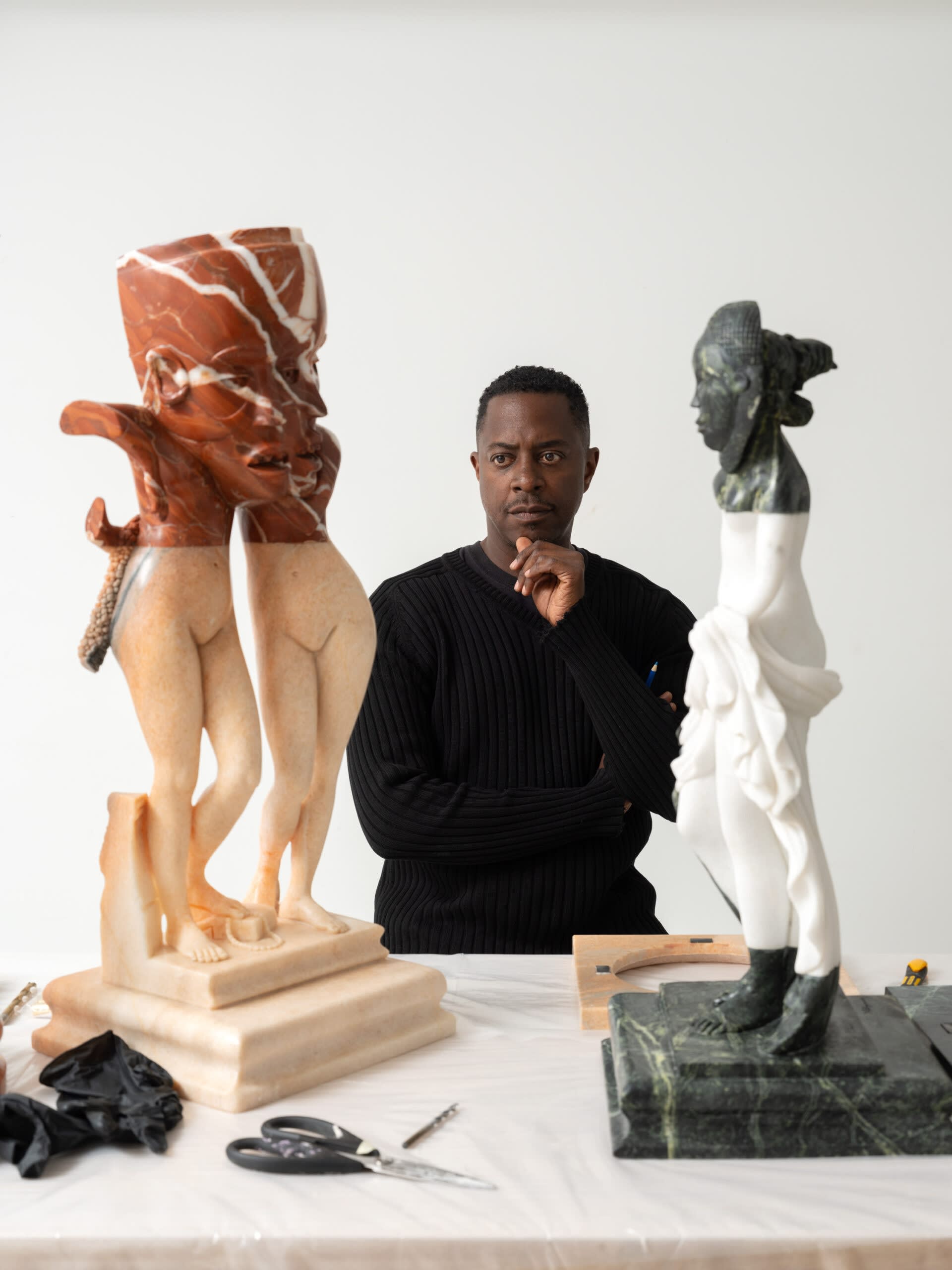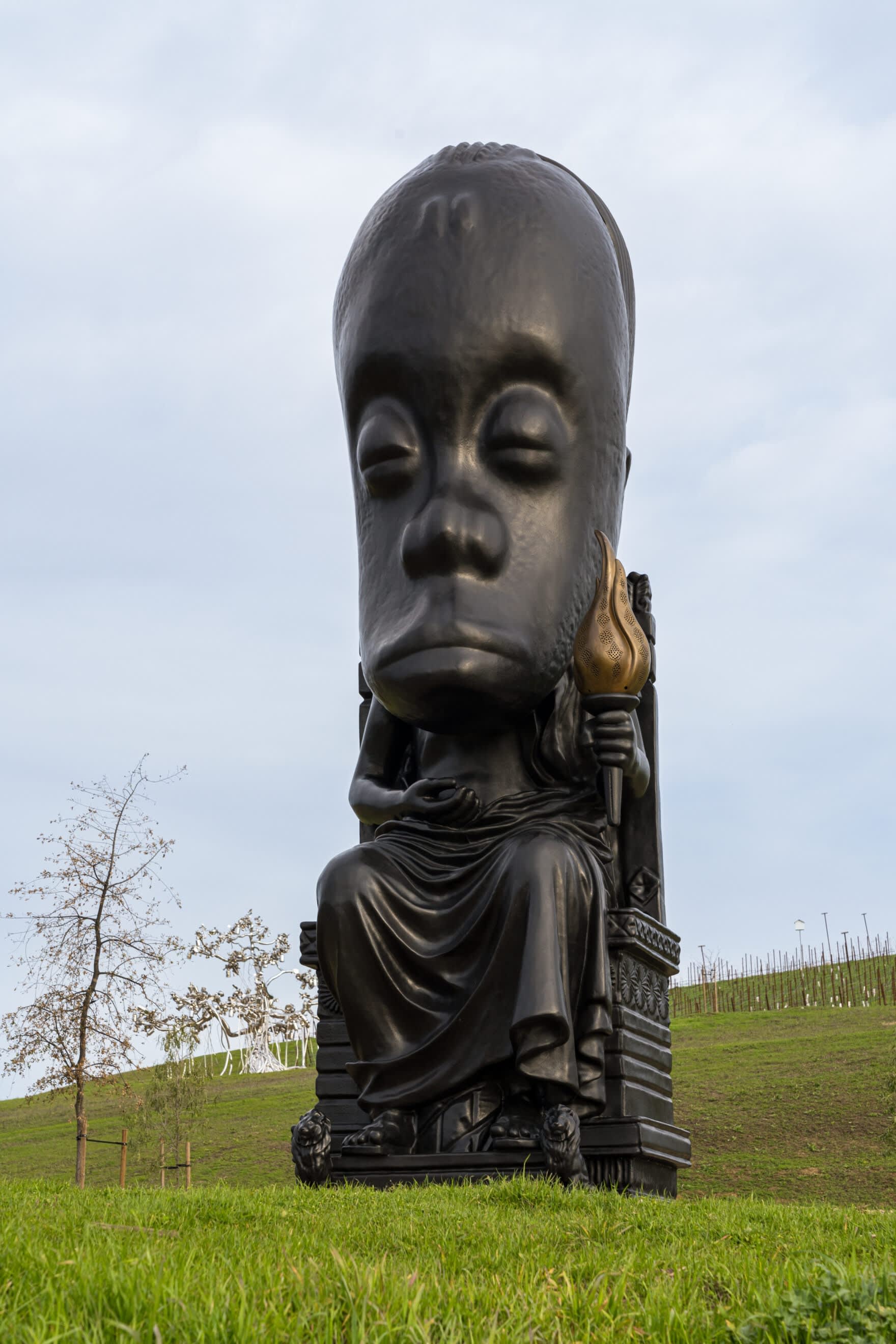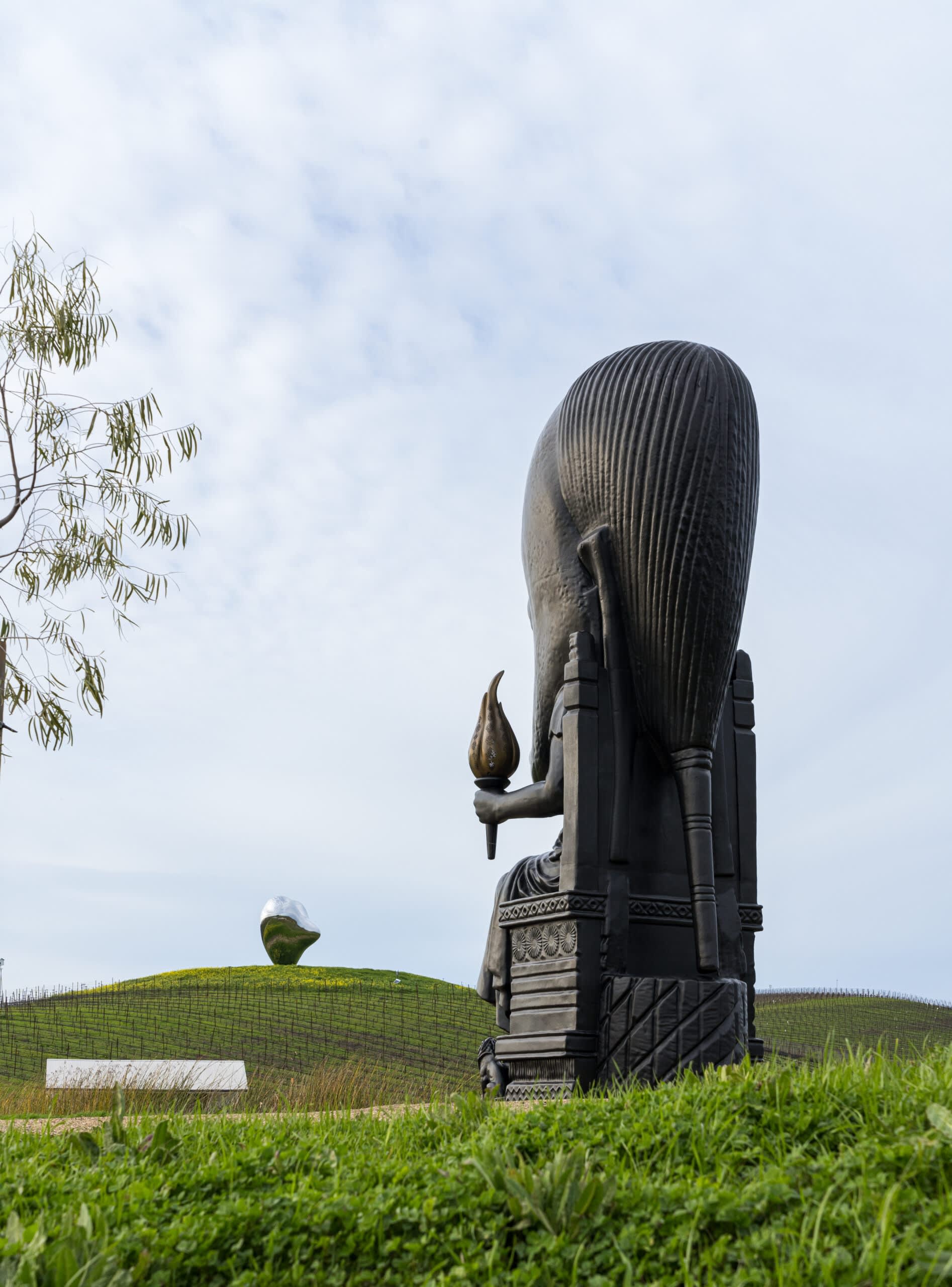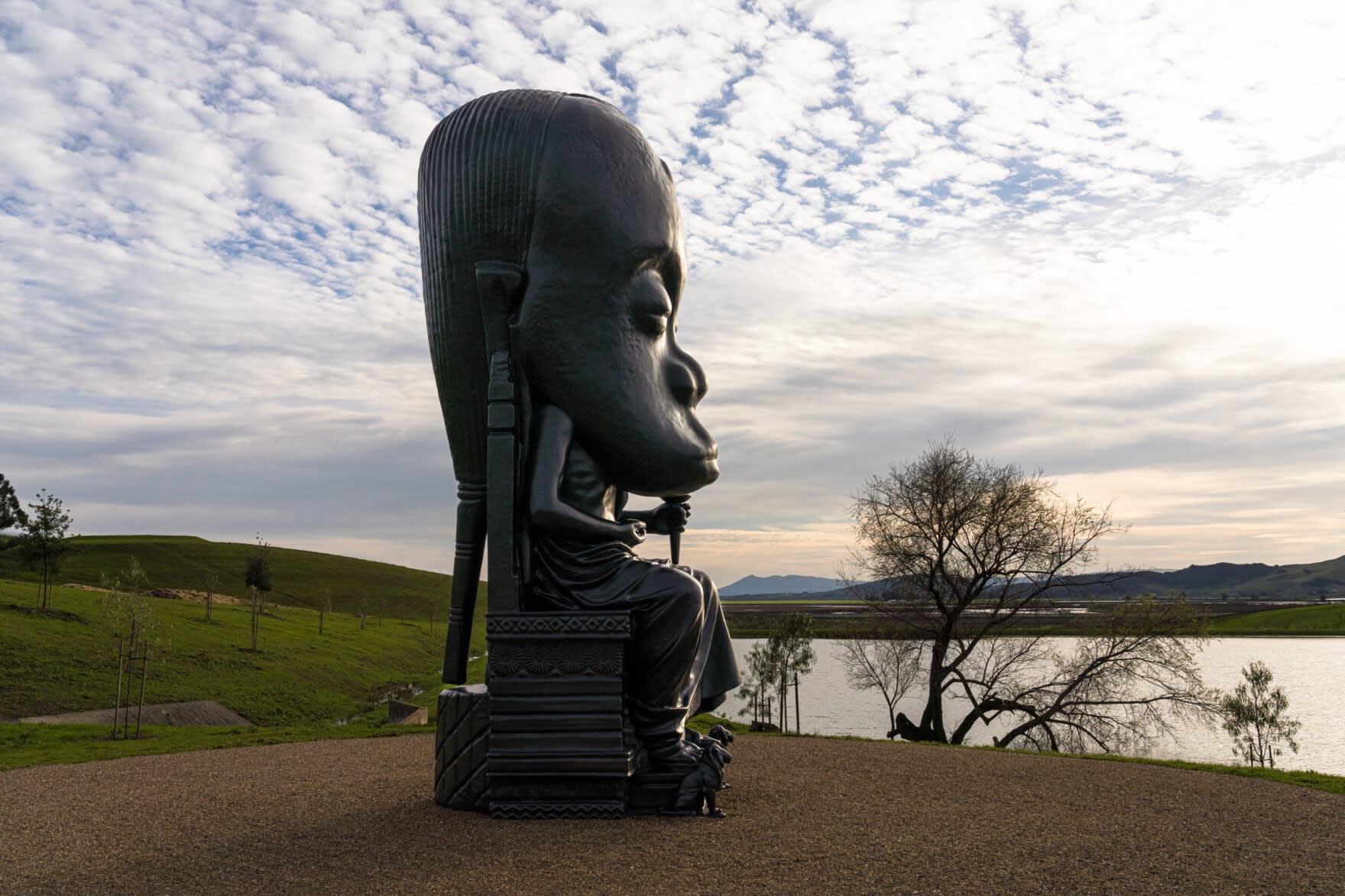A polyglot and syncretist, Biggers’s practice is intensely interdisciplinary; he works across video, sculpture, painting, photography, performance, and music. Fascinated by the mythologies, archetypes, and narratives that shape art and culture, history is his primary material. He draws upon various elements and influences — hip-hop culture, African-American folk traditions, Buddhism — in his work, creating entirely new symbols and associations as he combines them.

Sanford Biggers. Photographed by Daniel Greer.
Biggers likes to play with a material’s supposed function and expression. In his ongoing Chimera series, he re-fashions and re-interprets famous Greco-Roman sculptures, fusing them with references to African art objects, typically masks. One work in the series, Oracle (2021), has found a new home at The Donum Estate, a 200-acre winery that houses more than sixty monumental works of art, including dozens of open-air sculptures. It’s an astounding collection, featuring works by Yayoi Kusama, Louise Bourgeois, Fernando Botero, Ai Weiwei, and more. The location — the sweeping, verdant hills of Sonoma County — makes for an unforgettable viewing experience.
Twenty-five feet tall and cast in bronze, Oracle towers over the viewer with an undeniable gravitas. Donum is a fitting final destination for Oracle, which was previously installed at the Rockefeller Center and Hammer Museum in Los Angeles. The sculpture overlooks a tranquil pond, a locale that welcomes contemplation. The sculpture’s body is based on a depiction of the statue of Zeus at Olympia, while the head is a composite of masks and figures from the Maasa and Luba Kingdoms. Lotus blossoms, considered sacred in the Buddhist tradition, flank the oracle’s throne. The lotus is a recurring motif in Biggers’s oeuvre; he has reinterpreted the image of the flower to powerful effect, transforming each petal into a diagram of a slave ship.

“Oracle came about from my interest in mythology in general,” the artist explains. “Historical mythology from various cultures, but then also realising that, as an artist, I’m a storyteller, and each piece has some degree of narrative to it. So, I’m mythmaking as well, looking back at myth and then creating contemporary myths that could actually be analysed and influential in the future. I think of future generations looking back at this piece and trying to figure out what society made it. Where did it come from? Is this a European object? Is it an African object? An American object, whatever that might mean? And what was happening in the world for it to be made?”

Like the other sculptures in the Chimera series, Oracle alludes to the historical whitewashing of Greco-Roman sculptures and “black-washing” of African sculptural objects. Although many ancient Greek and Roman sculptures were originally painted with vivid colours, “pristine” white sculpture — colourless and therefore “pure” — became the aesthetic ideal. Similarly, the original context and function of African art objects were erased by the Europeans who plundered — and later drew inspiration from — them. They were ritual objects never meant to exist as stand-alone “works of art.” “Oracle operates as one of those works would have, had it not been put in a vitrine,” offers Biggers. “Having it out in the wild is very important. Now’s the time for it to go somewhere where you have to come and seek it out.”
Biggers is deeply invested in what he refers to as “the performativity of objects” — how the meaning we ascribe to objects changes depending on their context. “I often refer to my works as performative objects,” he says. “They perform in a certain way in each environment where they’re located, but it also forces the viewer to perform to even have access and get close to it. If they leave an offering, they’re performing, engaging with it, so it’s returning it to its original function. It’s a power object.”

Viewing Oracle, and any of the works in Biggers’s Chimera series, makes for a pleasantly disorienting and expansive experience. To look at a sculpture in the series is to see history collide and transform in front of one’s eyes. A kaleidoscope of interpretations refracts out to the viewer. There’s no single origin or meaning.
Biggers seems to always fix his gaze toward the future, the grand future, one hundred, two hundred years from now. His work urges viewers to reorient their relationship to time. “I’m interested in what kind of visual language we need to communicate ideas right now,” he tells me. “As an artist, that is one of the things you have to think about. The time often frames the work. The work you make in 2025 will feel a certain way than it might in 2050.”


